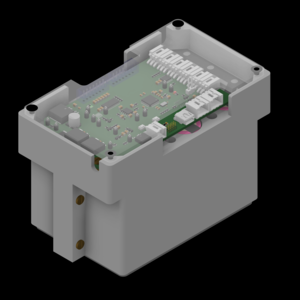
College of Engineering Unit:
The goal of this project is to design a replacement for the current battery packs in use on the OSU Robotics Club Mars Rover. Currently the club uses lithium polymer batteries, which are expensive and offer little built-in protections, increasing risk of battery fires and decreasing overall battery pack life. Our project focuses on improving our battery packs by decreasing material cost, increasing the overall battery lifetime, and making the battery packs safer for the team and general public. Our battery system integrates several components: a Lithium-Ion battery pack, a custom PCB to monitor battery conditions, and a 3D printed enclosure to house the battery pack and PCB. The PCB incorporates a microcontroller, which allows the system to monitor for conditions such as over/under voltage, over current, or over temperature events which could cause battery failure and pose a safety risk. Additionally, the PCB can communicate with the main Rover computer, sending real time measurements of battery conditions to our drive station. Because the control system must continually monitor battery conditions, we incorporated electronics with low power consumption and a sleep mode for when the battery pack is not in use. The primary challenges for this project involved the design of the analog circuitry responsible for taking measurements of the battery cells, as well as the manufacturing and integration process for the battery pack. Our system is successful in monitoring temperature, voltage, and current fault states. It also utilizes a low-power mode when not in use that periodically checks the battery for faults, allowing us to decrease overall power consumption. Future developments for the system include improving the current monitoring circuits, adding more protections to the microcontroller, and adding additional fusing to the PCB to prevent faults from damaging the battery pack. Future work will also be done to improve the wire harnessing, possibly through a redesign of the enclosure.
Project Website(s):